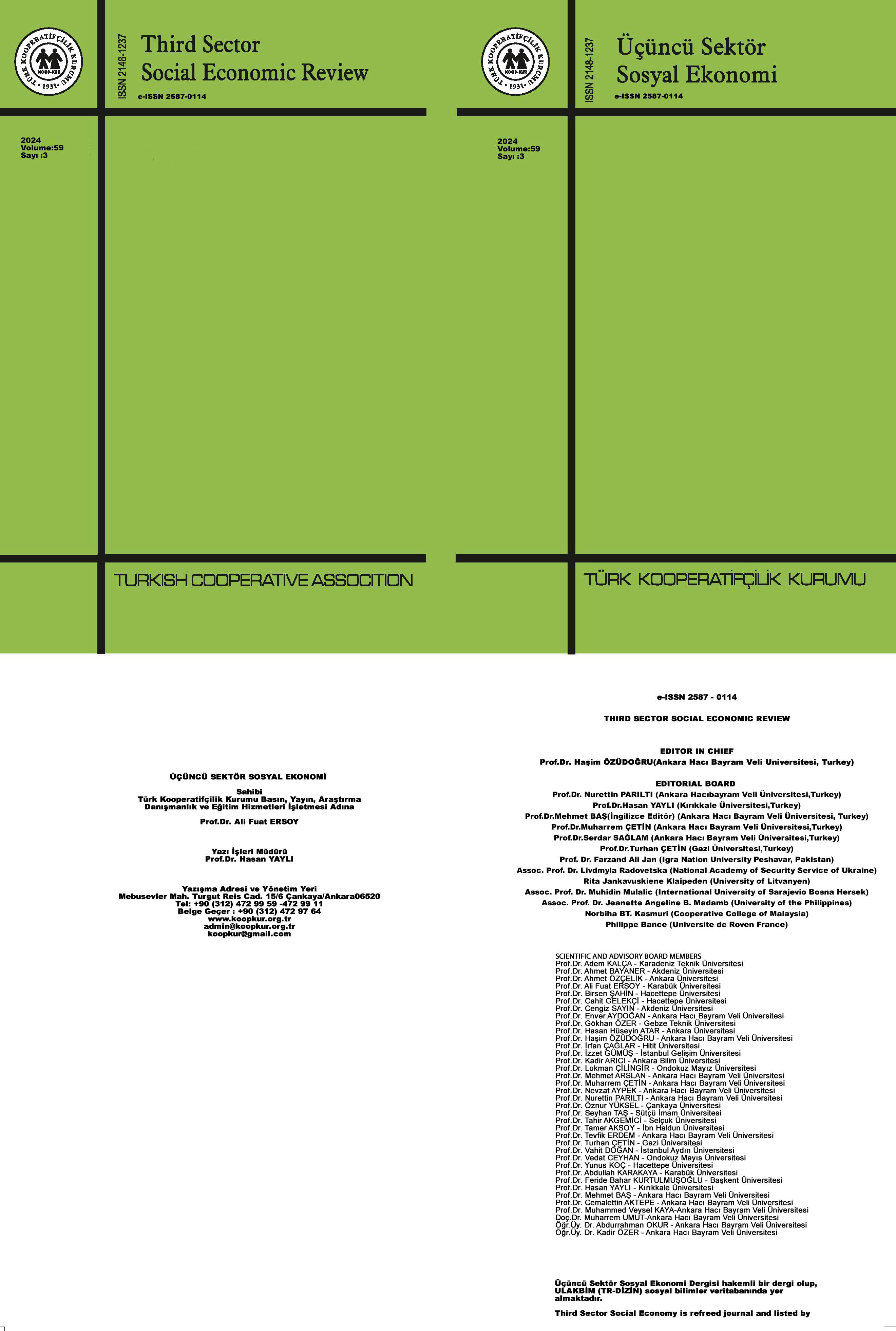Yıl: 2023 Cilt: 58 Sayı: 4 Sayfa: 2960-2979
doi: 10.15659/3.sektor-sosyal-ekonomi.23.11.2193
BÖLGESEL KONUT TALEBİ: PANEL VERİ ANALİZİ
FİLİZ TEPECİK
Bu çalışma Türkiye’de konut talebini etkileyen değişkenleri bölgesel verilerle incelenmektedir. Bu amaçla Türkiye İstatistiki Bölge Birimleri Sınıflandırmasına göre oluşturulan 26 bölgeye ait verilerle konut talebi, kişi başı gelir, konut fiyatları farkı, genel fiyat düzeyi, konut üretimi, gayrimenkul kredileri değişkenleri aracılığı ile 3 model ve dirençli panel veri tahmincileri ile analiz edilmiştir. Elde edilen sonuçlara göre, konut fiyatlarının artışı konut talebini düşürürken, diğer açıklayıcı değişkenlerdeki artışlar konut talebini artırmaktadır. Konut fiyatları, gelir ve diğer fiyatların açıklayıcı değişken olarak kullanıldığı ilk modelde, konut fiyat esnekliği 0.06, gelir esnekliği 1.505 - 1.791; çapraz talep esnekliği 0.83 - 1.71 olarak tahmin edilmiştir. İkinci modelde konut üretiminin dahil edilmesinden sonra fiyat esnekliği (0.143) ve çapraz talep esnekliği (Beck - Katz’da 1.211, Driscoll - Kraay’da 1.396) artarken, gelir esnekliği (1.066-0.866) düşmektedir. Üçüncü modelde, modele hane başına gayrimenkul kredileri eklenince, parametreleri yaklaşık değerleri korumaktadır. Sadece konut fiyatları, hanehalkı geliri ve diğer mal ve hizmetlerin fiyatlarının modele alındığı ilk modelde, kişi başına gelirin konut talebini en çok etkileyen değişken olduğu görülmektedir. Konut üretiminin ve gayrimenkul kredilerinin eklenmesi ile, konut dışındaki mal ve hizmetlerin fiyatlarındaki hareketler diğer değişkenlerden daha büyük parametre değerleri almaktadır.
Anahtar Kelimeler (Keywords): Bölgesel konut talebi, Dirençli panel veri tahmincileri, Konutun gelir esnekliği, Konutun fiyat esnekliği, Konut için çapraz fiyat esnekliği
REGIONAL HOUSING DEMAND: PANEL DATA ANALYSIS
This paper analyses the variables affecting housing demand in Turkey with regional data. For this purpose, housing demand is estimated with data from 26 regions of Turkey according to the Classification of Territorial Units for Statistics using 3 models and robust panel data estimators with the variables of per capita income, house price difference, general price level, housing production and real estate loans. According to the findings, an increase in house prices decreases housing demand, while increases in other explanatory variables increase housing demand. In the first model, where housing prices, income and prices of other goods and services are used as explanatory variables, the price elasticity of housing is estimated as 0.06, income elasticity as 1.505 - 1.791 and cross-elasticity of demand as 0.83-1.71. In the second model, after the inclusion of housing production, price elasticity (0.143) and cross-elasticity of demand (1.211 in Beck-Katz - 1.396 in Driscoll-Kraay) increase, while income elasticity (1.066-0.866) decreases. In the third model, when real estate loans per household are added to the model, the parameters persist at approximate values. In the first model, where only house prices, household income and prices of other goods and services are included in the model, per capita income is the variable that affects housing demand the most. With the addition of housing production and real estate loans to the model, movements in prices of goods and services other than housing have larger parameter values compared to other variables.
Anahtar Kelimeler (Keywords): Regional housing demand, Robust panel data estimators, Income elasticity for housing, Price elasticity for housing, Cross-price elasticity for housing
Tam Metin 288











